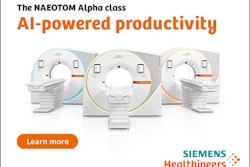Faced with increasing demand for gastrointestinal fluoroscopy studies and fewer residents interested in performing them, radiologists at the Cleveland Clinic looked to their technologists to bridge the gap.
Their question, related in the November issue of the American Journal of Roentgenology, was whether "dedicated gastrointestinal technologists could be trained to properly perform esophagography and double-contrast barium enema examinations." The answer appears to be yes (AJR, November 2000, Vol.175:5, pp. 1449-1452).
The findings weren’t surprising, given that the authors saw similar results in more than a half-dozen studies of RTs performing GI exams, starting in 1969. But the need to actually implement such practices may finally be arriving, as institutions find themselves with fewer residents interested in these relatively low-tech examinations. And while the demand for GI studies is on the rise, reimbursement rates are not.
At the Cleveland Clinic, researchers chose to train the technologists to perform double-contrast barium enema exams (DCBE) because the interpretation is based on radiographs rather than during fluoroscopy. Esophagography was chosen because the exam is recorded on both radiographs and videotape and involves a limited anatomic area with little variation among patients.
Eight technologists with a minimum of two years’ experience in GI radiology were trained with two hours of lectures, and observational sessions during which they watched radiologists perform the procedures. They began performing procedures on their own with a staff radiologist in the room; subsequent procedures performed with the radiologist present only in the suite were counted in the research analysis.
The analysis included 123 consecutive esophagography exams and 94 consecutive DCBE exams with air contrast. Technologists performed 37% of the esophagographic exams, residents performed 42%, and radiologists performed 21%. Technologists performed 52% of the DCBE studies, residents performed 30%, and radiologists 18%. The studies were then scored by GI radiologists without knowledge of who performed them.
The evaluations found no statistically significant differences among the groups’ esophagrams on double-contrast, single-contrast, and gastric cardia spot radiographs. But there was a difference (p=0.001) in the assessment of esophageal motility, which was rated good in 88% of the technologists’ studies, 78% of the residents’ studies, and just 46% of the radiologists’ studies. Reflux assessment was properly performed in 98% of the technologists’ studies and 100% of the others. The mean fluoroscopy time was 4.1 minutes for technologists, 4.6 minutes by residents, and 3.6 minutes by radiologists.
In the DCBE exams, the cecum was opacified in 93% of the technologist studies, 98% of the resident exams, and 95% of the radiologist studies. There were no statistically significant differences in the amount of barium used, the degree of distension on spot and overhead radiographs, or the quality of spot radiographs. But there was a significant difference (p=0.0001) in fluoroscopy time, with a mean of 3.2 minutes for technologists, 5.7 for residents, and 4.0 for radiologists.
Explaining the exposure results, the authors credited the technologists' familiarity with fluoroscopic equipment and their interest in limiting their own radiation exposure, particularly as all of the technologists were women of childbearing age. The authors also noted that while they didn’t evaluate the technologists’ studies for accuracy in detecting abnormalities, four other studies had found detection and accuracy rates comparable with the physician-performed exams.
"We chose to initiate this training program and evaluate its results because the volume of gastrointestinal fluoroscopic studies has been increasing at our institution, and the number of radiology residents rotating through fluoroscopy has been decreasing," the authors wrote. While residents appear more interested in high-tech modalities, including CT and MR, allowing technologists to perform traditional GI procedures may lead to greater job satisfaction and retention.
"Our results suggest that, for the most part, the technologists and residents scored equally well performing double-contrast barium enema examinations," the authors concluded. "This finding may have implications for practicing radiologists if the number of gastrointestinal procedures increases, the number of practicing radiologists adequately trained in gastrointestinal fluoroscopy decreases, or the number of radiology residents decreases."
By Tracie L. ThompsonAuntMinnie.com contributing writer
November 24, 2000
Click here to post your comments about this story
Copyright © 2000 AuntMinnie.com




















